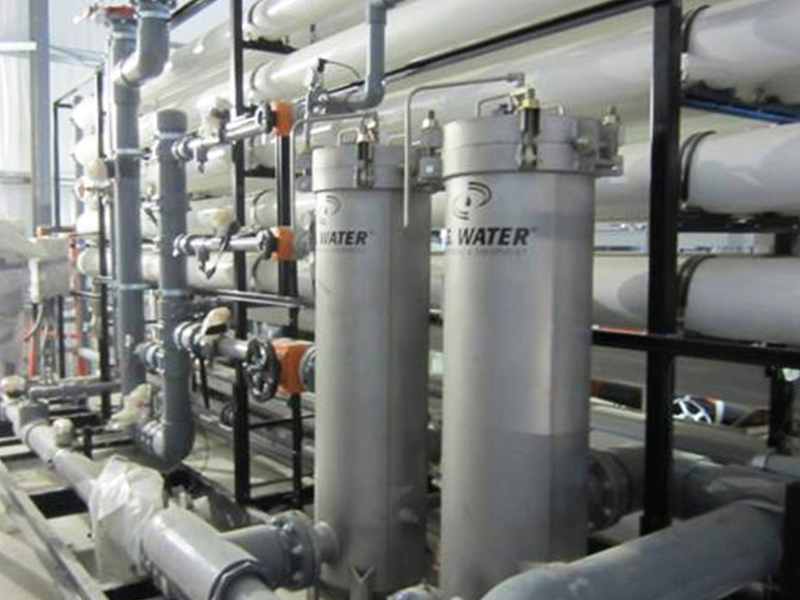Reverse Osmosis (RO) is a proven technology with new applications for various industries. U.S. Water’s representatives pride themselves on having extensive knowledge of RO unit installation, operations, troubleshooting and cleaning procedures. Let’s review the standards and best practices for RO units by first reviewing the process of osmosis.
OSMOSIS: A NATURAL OCCURRENCE
Osmosis is a natural process that causes water to flow through a semi-permeable membrane from a dilute solution to a more concentrated solution, thus diluting the concentrated solution. The rate of water movement is driven by the difference in salt concentration, called the osmotic pressure. This movement will cause the height of the concentrated solution to rise until an equilibrium is reached when the difference in solution heights equals the difference in osmotic pressure.
REVERSE OSMOSIS
Reverse Osmosis technology involves the application of pressure to the water stream in order to overcome osmotic pressure. When the pressure is increased and applied to the concentrated solution the flow of water is reversed. A portion of the concentrated solution is forced through a very fine membrane to emerge as purified product water leaving impurities to large to pass behind.
WATER TREATMENT TECHNOLOGY: RO UNITS
RO units are quickly becoming a standard constituent for the reduction of contaminants within water systems. Water is able to permeate an RO membrane much better than dissolved salts and particles so that most of those contaminants remain in the concentrated solution. Common applications of a RO unit include, but are not limited to; ethanol, industrial, boiler feedwater preparation, wastewater treatment and food processing.
PRE-TREATMENT: VITAL FOR OPTIMAL PERFORMANCE
Proper pre-treatment of the feedwater to a RO unit is critical for maintaining optimum performance and maximizing membrane lifetime. Excessive concentrations of suspended solids for biological activity will foul a RO membrane system. High hardness levels or other dissolved salts will scale up a RO if not controlled with the right U.S. Water scale inhibitor. The goals of RO pre-treatment are to eliminate scale formation and minimize fouling by suspended solids and bacteria.
PROPER MAINTENANCE
The removal effectiveness of a RO unit depends on how well it is maintained. The largest operational problem with RO units is fouling such as iron, inorganic colloids like silt and suspended solids. When properly maintained, a RO unit will:
- Dramatically improve water quality
- Reject 95-97% of incoming solids
- Greatly aid in the prevention of scale in a boiler program
- Reduce blowdown and chemical use by allowing increased cycles of concentration in boilers and cooling towers
- Decreased productivity
- Increased operational costs
- Reduced membrane life
- Reduced product water quality
Even with proper treatment, periodic cleanings are usually needed to maintain equipment integrity and efficiency over an extended period of time. Cleanings need to be customized to the fouling solids. The cleaners themselves are usually low pH (acidic) solutions or high pH (alkaline) solutions. Generally, the high pH cleaners lend themselves to better removal of clay/slit, biological and organic contamination. Low pH cleaners are better suited for inorganic scales and metal oxides. It is common for both to be applied during a cleaning process. If the fouling or formation has been allowed to progress for an extended period of time, the fouling solids will stabilize. Flow channels may become blocked. The time required to completely clean the system will increase, possibly to the point that it is impractical to clean the RO on-site.
U.S. Water recommends that a RO system be cleaned prior to a 15% increase in feed-to-concentrate pressure drop or decrease in permeate flow, both parameters are normalized for changes in other variables. U.S. Water can assist in this RO system performance analysis as well as membrane cleanings both on and off-site.

